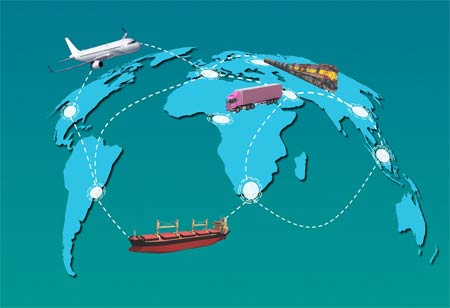THANK YOU FOR SUBSCRIBING
THANK YOU FOR SUBSCRIBING

By
Logistics Transportation Review | Friday, January 05, 2024
Stay ahead of the industry with exclusive feature stories on the top companies, expert insights and the latest news delivered straight to your inbox. Subscribe today.
Improving collaboration across the board helps to effectively manage ocean freight transit; carriers, shippers, brokers, and 3PLs must collaborate.
FREMONT, CA: Shippers and carriers face maritime freight visibility and global shipping network issues. Markets are progressively recovering, but there is still much work to do. Ocean freight transport struggles to recover and adjust to the new global supply chain standard. A lack of insight into cargo and shipment status and processes can harm the supply chain. National and international supply networks have consistently grown via adaptability. Ocean freight transit requires greater agility than ever. Much of the supply chain now expects interruption. Shutdowns, economic difficulties, inventory concerns, worker shortages, bottlenecks, delays, and more continue to hinder maritime freight transportation.
The global supply chain relies on ocean transit. As logistics managers and ocean transport directors battle to address ocean freight visibility issues, ocean supply chain visibility is more critical than ever. Rising ocean freight expenses and poor container visibility increase fees and expenses, a major logistical problem. Surcharges, taxes, and other expenditures sometimes surprise shippers and carriers in ocean shipping. Avoiding taxes and surcharges is the most straightforward approach to saving maritime cargo transit costs. Visibility, monitoring, and real-time tracking help discover and resolve issues before they cause detention, demurrage, and other fines. It helps in the reduction of detention and demurrage fees.
Advanced track and trace technologies give supply chain stakeholders real-time visibility into maritime shipping containers. While delays and outliers are inevitable, too many can harm the supply chain. With monitoring and planning, managers might feel safe against rising difficulties. Up-to-date data all stakeholders exchange helps detect, address, and resolve issues before they create significant delays. Shippers and carriers will only recover throughout recovery with on-time payments and cash flow management, even if goods are delivered on time. Poor maritime freight forwarding visibility might affect costs between parties.
Financial ocean freight shippers, carriers, and brokers require end-to-end visibility. Transparency ensures timely payments by allowing faster answers to payment delays, cargo claims, invoice problems, etc. Poor predictive planning helps to improve network processes. Global goods and port-to-port transit need ocean container visibility. Tracking and predictive visibility may simplify services and network operations, but only some have fully adopted them. Inbound shipments and tight, exact scheduling for loading and unloading, container shifting, and cargo distribution solve this challenge. Ocean freight management requires visibility before, during, and after containers arrive at the port.
Local and national supply chain leaders have undoubtedly seen and experienced automation and the advantages of modern technology and software improvements. Many remain unconvinced and fall prey to humdrum routines. It helps to boost independence by encouraging self-sufficiency and data accessibility; management can solve numerous maritime freight transport difficulties. AI, automation, and greater TMS integration will liberate team members from simple duties. Global supply networks need more shipping boats and containers to fulfill ocean freight container demand. Shipping fleets are fully deployed, and new ships and containers may take years.
Shippers, carriers, and brokers can operate more efficiently to exploit available ships and containers. Teamwork improves opportunity seizing. Customer happiness is crucial to corporate success and growth because consumers drive the market. Poor visibility in maritime freight chains can cause late delivery, reaction times, and poor customer service and support. Shippers and carriers may increase ocean container visibility and response times through customer service and customized transportation alternatives. Shippers and carriers may avoid interruptions and delays or respond to them more personally with sophisticated insights and data-backed predictions.
Innovation and technology have created tools and platforms to improve ocean container visibility and communication. Ocean shippers and carriers may increase freight visibility via container tracking. Even in good times, local and global supply networks require clear communication and collaboration. Poor supply chain communication causes many maritime freight firms to lose out on growth prospects. Like other businesses, ocean freight and transportation services ultimately outgrow traditional methods. Container shipping and cargo container management in maritime transportation corridors demands new ways. Successful maritime transport firms are open to change, use new tools and technology, and embrace change.
See Also : Top Tax Advisory Services Companies in Canada
I agree We use cookies on this website to enhance your user experience. By clicking any link on this page you are giving your consent for us to set cookies. More info





